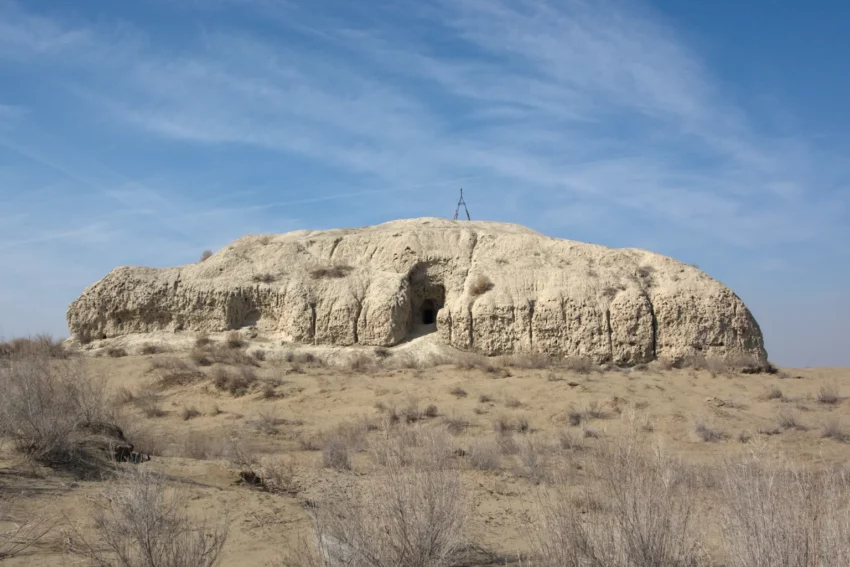The Historical Significance of Vardanzi
Vardanzi, also known as Vardanze, represents a significant chapter in the ancient and medieval history of Central Asia. Located 40 kilometers northeast of Bukhara, Uzbekistan, this site has captivated historians and archaeologists with its rich past and the mysteries it holds. The area, now a reserve in the Shafirkan Bukhara region, was once a bustling town that played a crucial role in the region’s socio-political and economic landscape.
Get your dose of History via Email
Origins and Founding
The foundation of Vardanzi dates back to the 6th century AD, predating the establishment of Bukhara, one of the most renowned cities along the Silk Road. According to historical records by the historian Narshakhi, Vardanzi was founded by a Sasanian prince named Shapur. This prince, the son of a Sasanian ruler Khusraw—potentially either Khosrow I (531-578 AD) or Khosrow II (590-628 AD)—is credited with the town’s establishment on the edge of Turkestan. The exact motivations and circumstances surrounding Shapur’s move and subsequent founding of Vardanzi remain a subject of speculation, but it is clear that the town quickly rose to prominence.
Architectural and Political Significance
Vardanzi was not just any settlement; it was a fortified city, known for the Kuhandiz Ark, a formidable inner city that served as the stronghold for the rulers of Vardana, the Vardan-khudats. This dynasty of kings not only made Vardanzi their residence but also oversaw its growth into a significant industrial, commercial, and strategic location. The city’s importance was further enhanced by its role as a border crossing point for nomads, illustrating its pivotal position in the region’s trade and military routes.
Conquest and Decline
The strategic significance of Vardanzi did not go unnoticed by the expanding Arab forces in the region. In the years 708–709 AD, the Arabs, led by Qutayba ibn Muslim, conquered the Romitan possession of Vartan-haudatov, marking a significant shift in the town’s history. Despite its resilience and strategic importance, Vardanzi could not withstand the environmental challenges it faced in the 19th century. The translational motion of sand bombarded the city, rendering it uninhabitable and leading to its eventual abandonment.
Legacy and Archaeological Remnants
Today, the remnants of Vardanzi survive as a large hill, a testament to its once-great status. The town’s legacy, however, extends beyond its physical remains. The construction of a canal by the legendary prince Shapur, known as Shapurkam, highlights the ingenuity and resourcefulness of its inhabitants. This canal not only made Shapur a popular figure but also underscored the town’s importance in the region’s agricultural and economic activities.
Conclusion
Vardanzi’s history, from its founding by a Sasanian prince to its eventual decline, offers a fascinating glimpse into the complexities of ancient and medieval Central Asia. Its strategic, commercial, and industrial significance, coupled with its rich architectural heritage, make Vardanzi a subject of great interest for historians and archaeologists alike. As research continues, the story of Vardanzi will undoubtedly contribute to our understanding of the region’s past and the myriad factors that shaped the course of its history.

